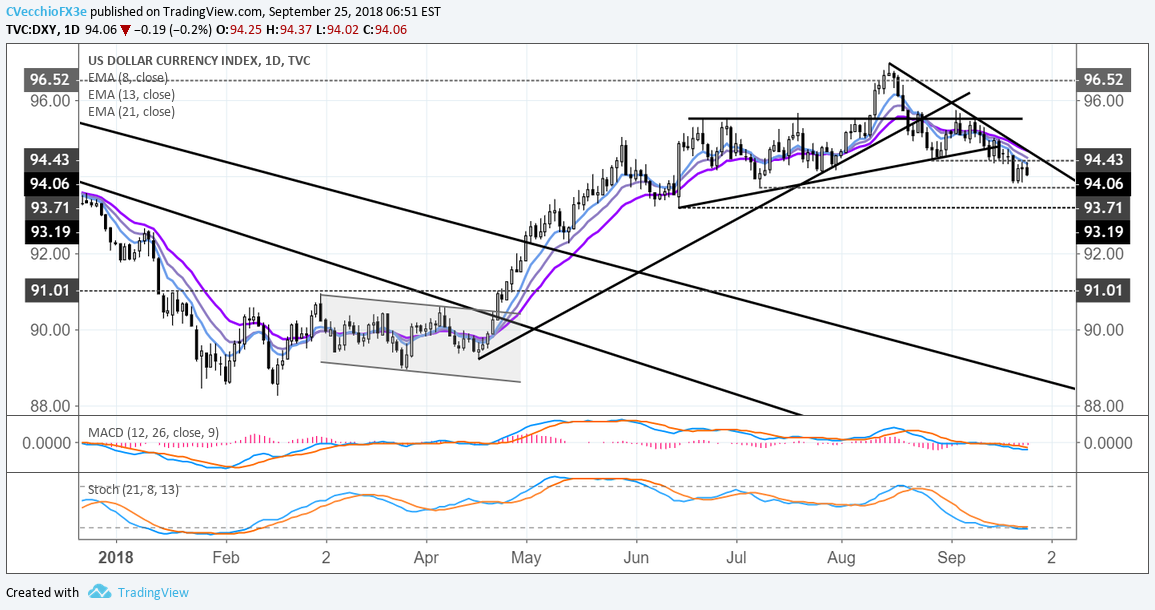
The US Dollar (via the DXY Index) is trading lower following the daily hammer established yesterday, which hinted at a possible rebound. Alas, with the DXY Index falling back after another test of resistance at the late-August lows, losses are once again taking shape. It’s worth noting that the drop in the US Dollar is occurring while the US Treasury 10-year yield moved up past 3.100%, a fresh yearly high.
For US Dollar traders, nothing is more important over the next day than what happens at tomorrow’s Federal Reserve policy meeting. It is essentially universally accepted that the FOMC will hike rates by at least 25-bps tomorrow, with some taking the precocious stance that a 50-bps hike will materialize. Fed funds peg the odds of a 25-bps hike tomorrow at 100%, with a 2.1% chance of a 50-bps hike.
There are a few things to consider about current market pricing. At a minimum, a 25-bps rate hike will not help lift the US Dollar; it is already priced in. Because there is a small chance of a 50-bps hike, the fact that this won’t materialize will take some wind out of the US Dollar’s sails.
To this end, it doesn’t seem likely that the excessive optimism about a 50-bps hike will result in expectations for the Fed’s December meeting (the next time a new Summary of Economic Projections is released) to increase. After all, there is already a 72% chance of a fourth and final 25-bps hike priced in for December. Accordingly, this leaves the US Dollar in a ‘buy the rumor, sell the news’ type of situation, even if the buck hasn’t been bid up beforehand.
DXY Index Price Chart: Daily Timeframe (January to September 2018) (Chart 1)

If the fundamental bias for the US Dollar is bearish, then it is complementing an already bearish technical structure that’s emerged in recent days. The DXY Index has continued to hold below the late-August swing low near 94.43; today would be the fourth consecutive close below. Price remains below its daily 8-, 13-, and 21-EMA envelope, while both daily MACD and Slow Stochastics continue to trend lower in bearish territory.
















